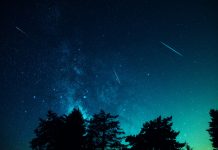Here, Open Access Government examines international science and engineering activities within and outside the U.S. National Science Foundation
This article will look at the importance of supporting international science and engineering research activities. The Office of International Science & Engineering (OISE), part of the U.S. National Science Foundation (NSF), emphasises international activities that support innovation within the U.S. research community through access to international knowledge, capabilities and infrastructure. OISE manages internationally-focused programmes that are both catalytic and innovative.
We can sum up the work of the OISE into three main areas, which are to:
- Promote the development of a competent U.S. workforce.
- Support and facilitate international networks and partnerships to leverage NSF and resources from other countries.
- Provide chances for U.S. leadership to have input into the science and engineering agenda at a global level.
Novel programmes of the OISE like the Partnerships for International Research and Education (PIRE), NSF MULTIPLIER – MULTIPlying Impact Leveraging International Expertise in Research Missions (MULTIPLIER), the Partnerships for International Research and Education (PIRE), and the International Research Experiences for Students (IRES) support the aforementioned areas. (1)
Leadership at OISE
In terms of leadership, Dr Kendra Sharp was selected in late 2020 to lead the OISE. In her role, she looks at several key areas such as increasing the capacity for American-based students and faculty to take part in training and other opportunities in science diplomacy or increasing access for principal investigators to engage in research on a global scale that deals with pressing challenges. Dr Sharp’s teaching and research interests include applications of technology in humanitarian engineering, design for international development, plus sustainable water and energy systems. Since 2019, she has been a Faculty Member in Mechanical Engineering at Oregon State University and between 2015 to 2020, she held the Richard and Gretchen Evans Professorship of Humanitarian Engineering.
“I have long been driven to address challenges such as access to clean water or clean energy, climate change, food security and more through my own international research, education and engagement efforts,” Sharp says. “Leading an internationally-focused organization at NSF offers an opportunity to continue my service on a truly national and international scale.”
NSF Director Sethuraman Panchanathan adds, “Dr Sharp’s commitment to strong global partnerships to address grand challenges and the belief that international collaboration is important to solve humanitarian issues fit perfectly with the mission of the Office of International Science and Engineering. Her commitment to applying science and engineering expertise to create a better future for all will strengthen NSF’s role as a national and international leader in fundamental research.” (2)
Engineering solutions
Dana Denick in NSF’s Directorate for Engineering says that finding new engineering solutions to water treatment problems is crucial to ensure we all have clean water. In news from August 2020, we find out about how graphene-wrapping innovation makes fighting superbugs in wastewater treatment more effective.
“Superbugs are known to breed in wastewater treatment plants and release extracellular antibiotic resistance genes (ARGs) when they are killed as the effluent is disinfected,” Rice Environmental Scientist Pedro Alvarez says.
“Our innovation would minimize the discharge of extracellular ARGs, and thus mitigate dissemination of antibiotic resistance from wastewater treatment plants,” Alvarez adds. Denick concludes that the nano-materials developed by this research project “show great promise for removing harmful contaminants from wastewater” in this example of the search for an engineering solution. (3)
International collaborative efforts
Another NSF-funded project concerns a significant development in how we understand how the winds changed in times past and how they carry on changing in the future. The researchers reconstructed wind patterns that took place three to five million years ago, by making use of dust in ancient, deep-sea sediments as an indirect way to trace wind. “This interdisciplinary project advances our understanding of climate patterns over a long-term scale,” Maija Kukla explains, from the NSF’s Office of International Science and Engineering. “It demonstrates that NSF’s Partnerships for International Research and Education program enables major discoveries that require international collaborative efforts,” she adds. (4)
The future of science and engineering
Finally, we can wrap up this article well with some thoughts from Sethuraman Panchanathan, who in June 2020 began work as the NSF’s 15th Director. He shared his vision for his six-year term and promised a continued move towards inclusiveness in science and engineering. Part of that concerned his comments about the current global challenge of COVID-19 and providing solutions to address current problems.
“Right now, the world faces significant scientific challenges – most obviously a pandemic. But in addition to providing creative solutions to address current problems, our eyes are on the future, leveraging partnerships at every level and encouraging diversity that breeds new ideas for a robust pipeline of young scientists. It is only through that expansive perspective on the scientific and engineering enterprise that we can recognize the brightest ideas and nurture them into tomorrow’s world-class technological innovations.” (5)
References
1) https://www.nsf.gov/od/oise/about.jsp
2) https://www.nsf.gov/news/news_summ.jsp?cntn_id=301741&org=OISE&from=news
3) https://www.nsf.gov/discoveries/disc_summ.jsp?cntn_id=301032&org=OISE&from=news
4) https://www.nsf.gov/discoveries/disc_summ.jsp?cntn_id=301919&org=OISE&from=news
5) https://www.nsf.gov/news/news_summ.jsp?cntn_id=300793&org=OISE&from=news











